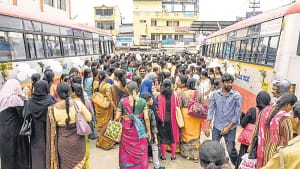Mumbai, Nov 28, 2024: Despite significant efforts to control air pollution within Mumbai, a new study recommends a broader approach to address the city’s deteriorating air quality, particularly during the winter months. The study suggests integrating Mumbai into a coastal airshed that includes its satellite cities, urging a coordinated strategy to manage both urban and non-urban pollution sources that impact the region.
What is an Airshed and Why It Matters?
An airshed is a geographic area where air pollution is monitored and managed collectively. Pollution does not recognize city or state borders—pollutants from one area can travel across regions. To effectively manage air quality, cooperation between cities, states, and even neighboring countries is essential. Mumbai’s air quality has worsened in recent years, especially during the winter, when both local emissions and external factors like meteorological conditions exacerbate the situation.
Mumbai’s Winter Pollution Crisis
Mumbai’s pollution levels significantly spike during the winter season, driven by a combination of internal sources—such as vehicular emissions, industrial activity, and construction—and external factors like winds blowing pollutants from surrounding regions. According to the World Air Quality Report 2023, the city’s PM2.5 levels increased by 23% in January 2023 compared to the previous year, placing Mumbai among the most polluted cities globally during the winter months.
The Coastal Airshed Proposal
The study, titled Designating Airsheds in India for Urban and Regional Air Quality Management, published in MDPI’s Air journal, proposes a regional airshed approach to combat the pollution crisis in Mumbai. The authors recommend dividing India into 15 regional airsheds, each designed to address the unique climatic and pollution patterns of different regions. For Mumbai, the study suggests grouping it with surrounding coastal cities to better manage air quality across urban and rural areas.
Sarath Guttikunda, the study’s lead author and founder of UrbanEmissions.info, emphasized that while Mumbai is a major contributor to regional air pollution, the surrounding satellite cities also play a significant role. He explained, “Coordinated management across Mumbai and its neighboring areas could create a positive feedback loop, improving air quality and health outcomes for the entire region.”
Cooperative Strategy for Air Quality Improvement
Under this model, urban local bodies (ULBs), state governments, and regional stakeholders would collaborate to tackle shared pollution issues. Such cooperation could include coordinated efforts to reduce industrial emissions, manage traffic pollution, and implement green urban planning. Guttikunda further noted, “Cities like Mumbai, despite their coastal advantages, have seen rising pollution levels, particularly in winter. A regional airshed would help address this more effectively.”
Regional Collaboration for Cleaner Air
The study’s recommendations extend beyond Mumbai’s borders, calling for cooperation with surrounding areas. The idea is to create a regional partnership that can share responsibility for reducing pollution. By collectively managing both urban and non-urban pollution sources, cities can create more effective strategies and policies, benefiting the entire region.
Airsheds Across India
The study proposes 15 airsheds across India, tailored to the distinct pollution patterns of each region. These include:
- Himalayas (2 airsheds)
- Gangetic Plains (4 airsheds)
- Plateaus (4 airsheds)
- Arid/Desert (1 airshed)
- Coastal Plains (3 airsheds)
- Islands (1 airshed)
Conclusion
Mumbai’s air quality challenges cannot be solved by focusing on the city alone. A regional approach, integrating both urban and rural areas into a larger coastal airshed, offers a more comprehensive solution. By fostering collaboration between neighboring cities, states, and agencies, Mumbai and its surrounding regions can create more effective, long-term strategies to combat air pollution and protect public health.
Sidenote: This news report is curated with insights from multiple reliable news sources.



















